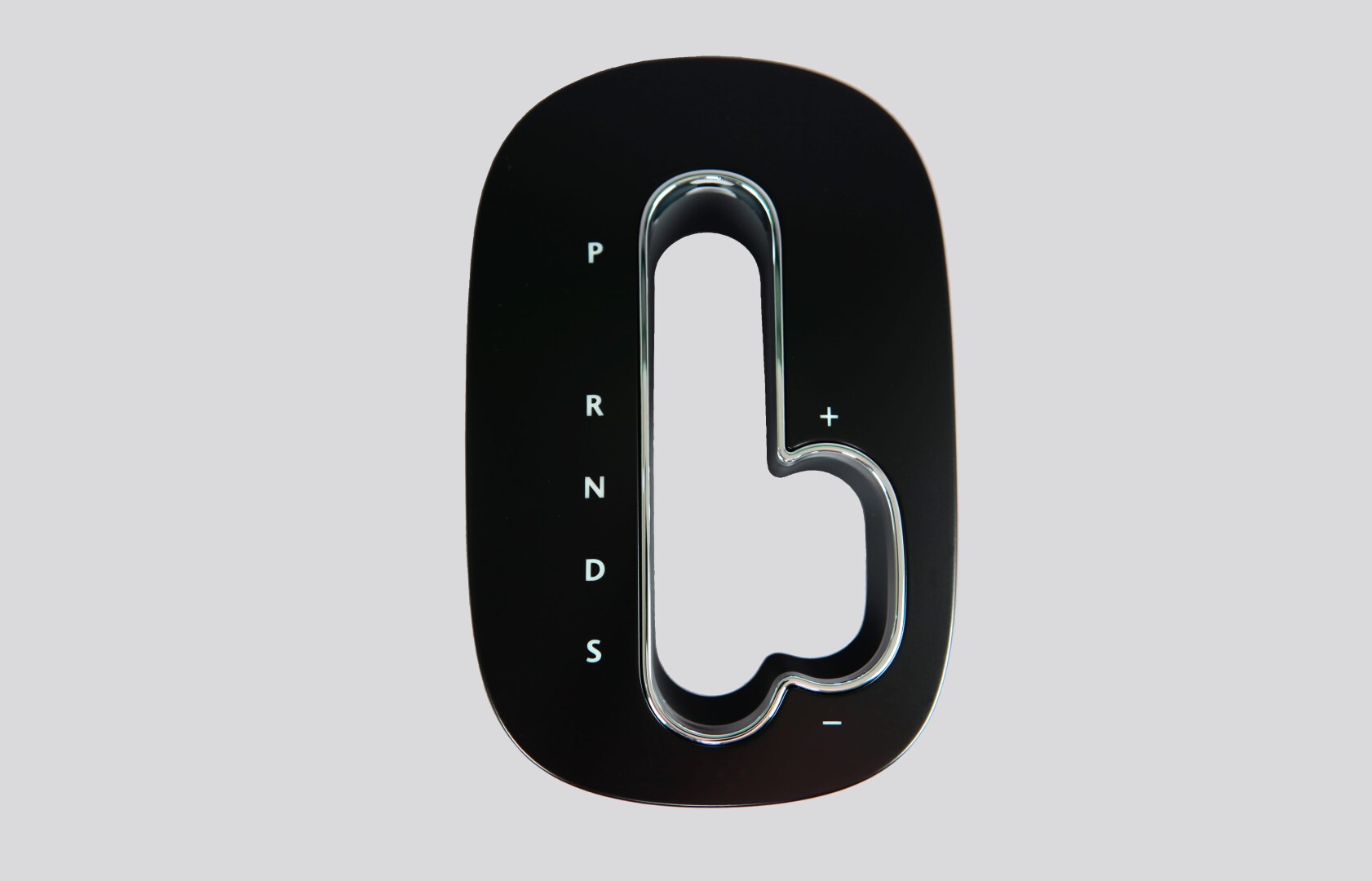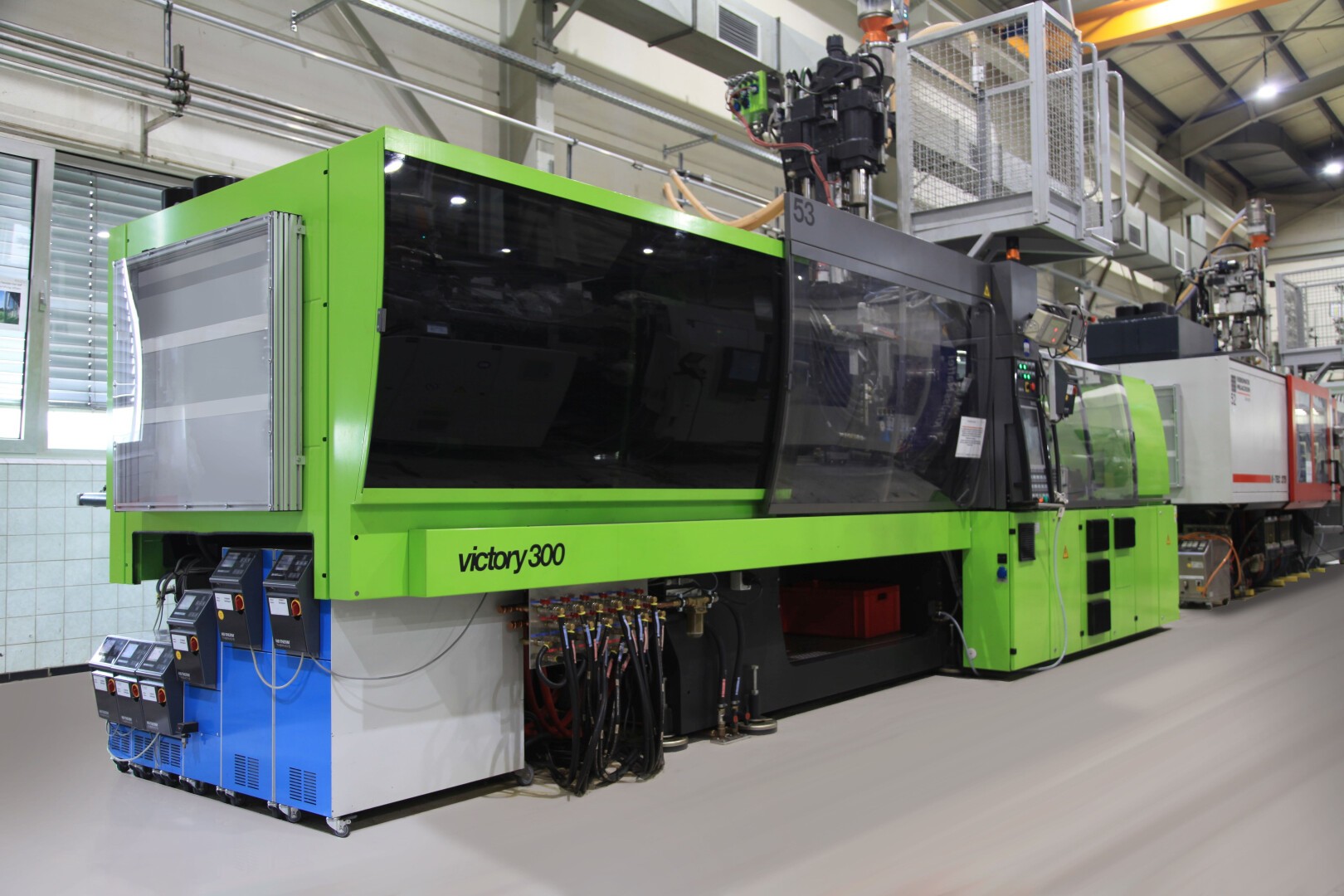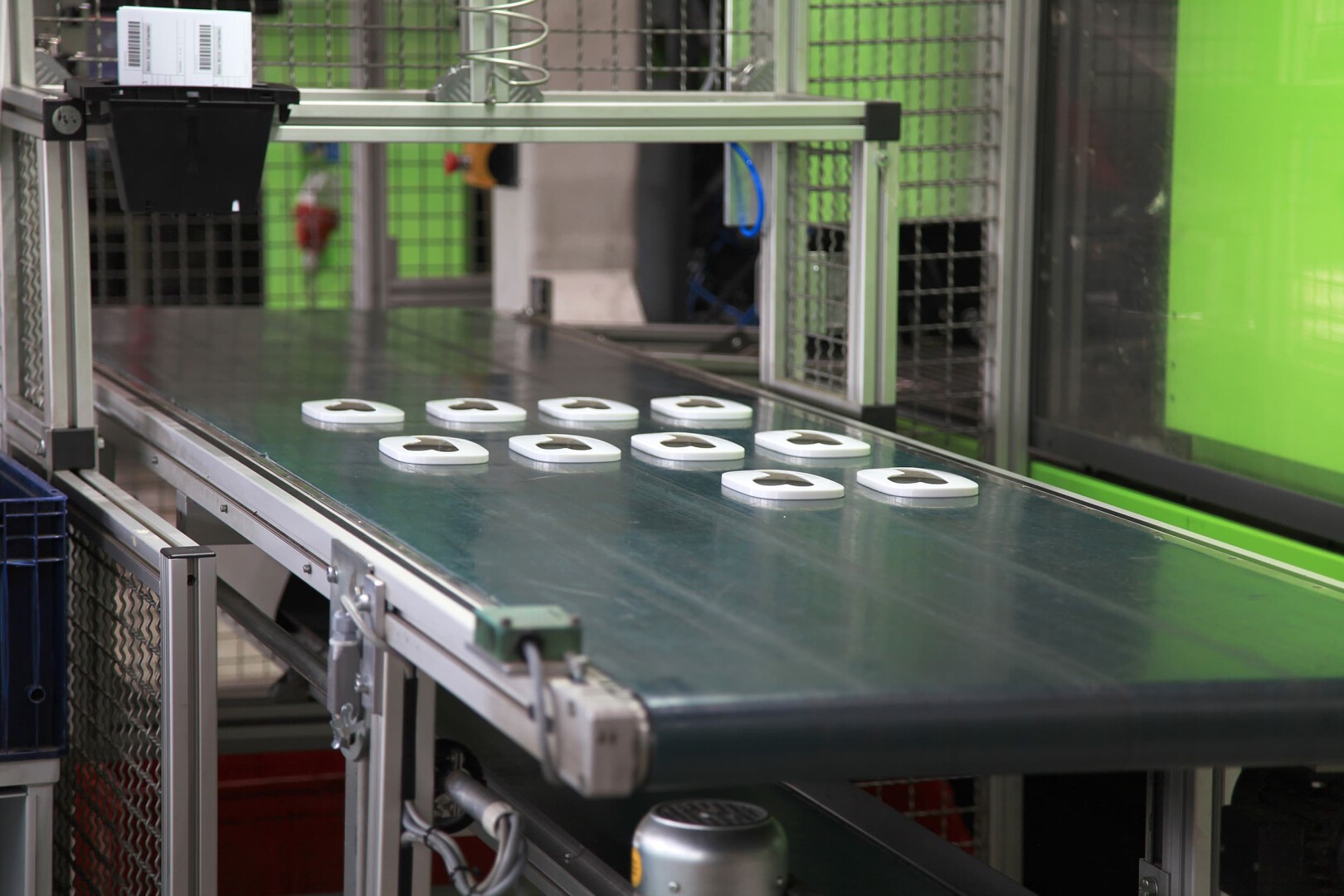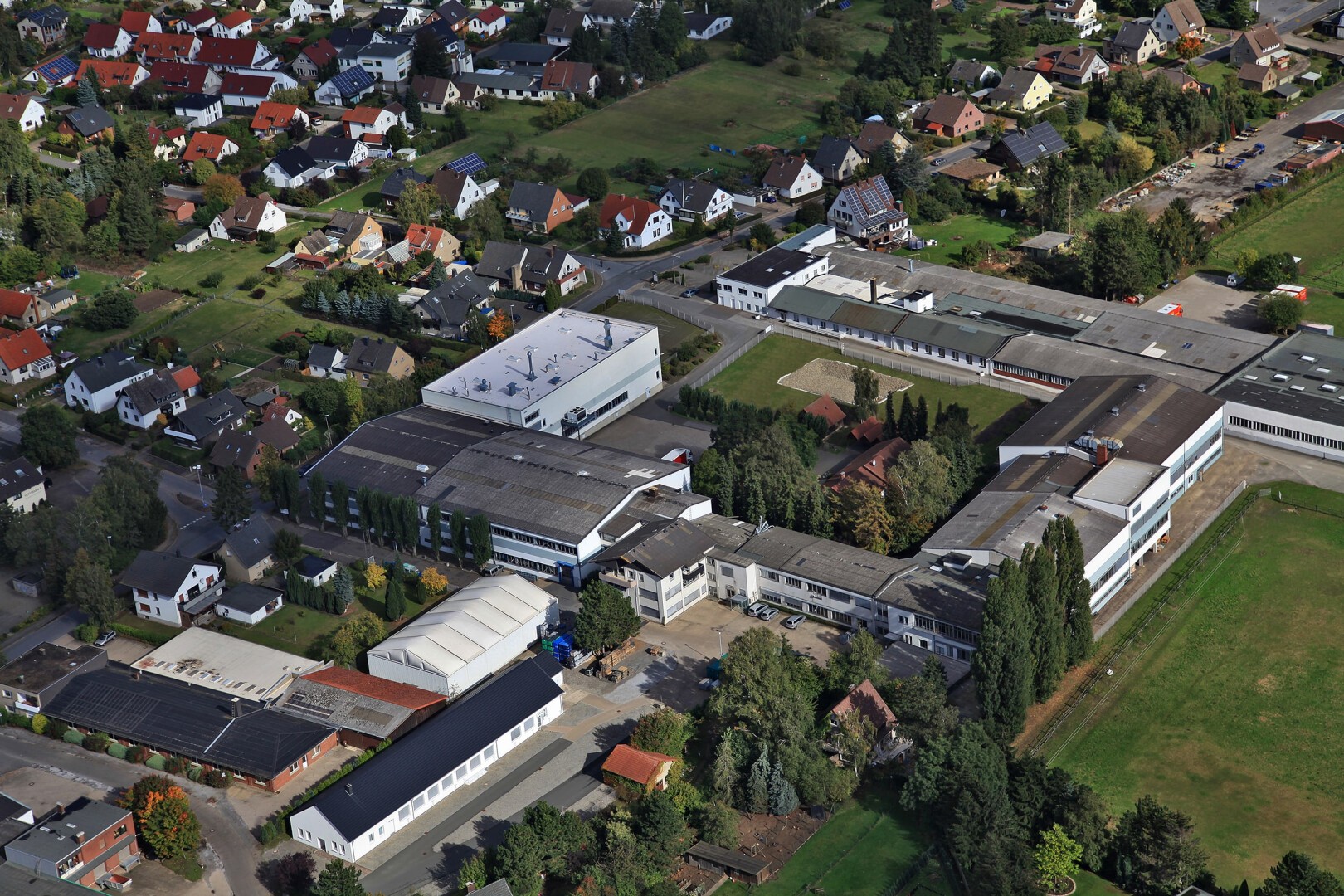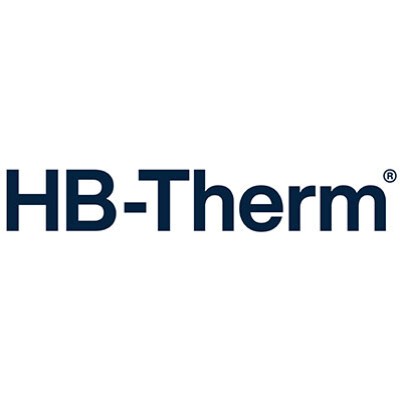High surface quality with variothermal control
Some of the current demands on injection moulded parts, for example in terms of material and surface quality, can no longer be adequately met with conventional mould temperature control. This is why a manufacturer of injection moulded parts relies on variothermal temperature control.
High surface quality with variothermal control
Today, injection-moulded parts must meet high requirements to material and surface quality that can no longer be satisfied with conventional temperature control tools. For this reason, manufacturers of injection-moulded parts rely on temperature control processes that keep temperatures high during injection and low during the cooling phase. The temperature control process changes the temperatures at the cavity surface and thus actively within the injection cycle. This improves the quality of parts with piano black surfaces.
If a globally active manufacturer of injection parts concentrates its core competencies in a single sector – contrary to the diversification trend – it must have broad and in-depth expertise in the field. Key Plastics Löhne, a company of Key Plastics headquartered in Livonia, Michigan (USA), is a prime example for this. Key Plastics is a manufacturer of plastic parts for the interior, body and engine compartment of vehicles. The company consistently uses innovative technologies to provide its customers with highest quality in series. Big names from the automotive industry also rely on the company‘s experience. For example, Löhne produces shifting gate covers for automatic transmissions of Bentley. To achieve best surface qualities, Key Plastics uses variothermal temperature control, in a process regulated via two HB-Therm tempering units and the Vario-5 switching unit – with great success in series production. In a former alternative configuration, problems had emerged in production, mainly in the area of stability. Key Plastics Löhne, therefore consulted HB-Therm to inquire whether the Swiss company had equipment able to improve the disappointing results of the system in place. Based on highly successful trials with the variothermal system launched in 2014 by the Swiss specialists at Key Plastics, the injection-moulding manufacturer chose HB-Therm as an exclusive partner in the field of variothermal control. Serdal Dogan, application engineer for Key Plastics in Löhne says, „Variothermal control is especially advantageous in the interior sector, due to the general problems posed by surfaces in visible components“. The use of this system reliably prevents, for example, the formation of weld lines or sink-marks in extreme wall thickness conditions and allows the manufacturing of components with high surface quality for interiors in large-scale production. A keyword here is the manufacture of components with high-gloss ‚piano black‘ surfaces. Such parts cannot be subsequently polished, but must be visually flawless and appropriately scratch-resistant in everyday use. The use of PC and ABS already makes these products expensive, due to the raw materials used. Added to this, are the high requirements in terms of flow rate and thin walls. “The reduction of cycle times plays basically a secondary role,” says Serdal Dogan. “However, HB-Therm could also gain kudos here thanks to low inertia of the system in the field of energy transport.” Since cyclic heating and cooling takes place in sequence with the injection moulding machine, the highest temperature is reached during the injection phase, while the lowest is reached for demoulding. The signals for switching must therefore be made earlier, by the amount of system delay. After the variothermal control system proved its worth in continuous operation, the technology was tuned and configured for several tools at the same time.
Variothermal control: What for?
Some of today‘s challenges in quality and material cannot be adequately satisfied with conventional temperature control systems. Variothermal control provides the solution: The temperature is kept high during the injection phase, but low during the cooling phase. The temperature control process changes the temperatures at the cavity surface thus actively within the injection cycle. The quality of parts can be sustainably improved: The formation of weld lines is prevented, and even the finest structures can be replicated with high contour accuracy. Sink marks are reduced and short heat-up and cool-down times ensure energy-efficient operation. At the same time, the two standard temperature control units stay modular and can thus be used for normal applications as well. The entire process control is highly accurate thanks to monitored switching processes, and process monitoring is fully automatic. All the data can be recorded via USB and analysed using Excel.
Variothermal control: The technology
The HB-Therm variothermal control system uses to the fluid-fluid technique and consists of two Thermo-5 temperature control units that are preset to the respectively required temperatures, and the Vario-5 switching unit. This alternately connects, according to an adjustable interval (switching time), the „hot“ and „cold“ temperature control unit with the same temperature control circuit. The system supports users in determining the optimum settings through wizards for nominal temperatures, delay and switching times. For the Bentley shifting gate covers of Key Plastics, an external control module for convenient system control and – due to the suboptimal water quality – a Treat-5 water treatment unit for use at higher water temperatures up to 180 °C are deployed alongside the two temperature control units and the switching unit. This configuration provides the best performance conditions for parts production. „We work with temperatures of about 175 °C in the ‚hot‘ area and around 60 °C in the ‚cold‘ area“, explains Serdal Dogan. „Due to tight cycle times of approximately 60 seconds, we must be able to rapidly change temperatures and de fine exact switching points. All this is offered by the HB-Therm system in a simple and reliable way.“ The mould is heated with start metering and must then be cooled accordingly fast. The appropriate level of quality is determined in the mould already, by an examination of the surface temperature. This is done by sensors under the contour of the visible surface, which permits a highly accurate measurement. This measurement helps to increase process reliability, because switching between ‚hot‘ and ‚cold‘, or the start of the injection, can thus be set dependent on the temperature. Only after the test and part removal, the tool is closed for the new cycle.
Variothermal control: Perfect results
At first glance, the shifting gate cover of white PC from a single mould with a shot weight of about 28 g, is rather unspectacular. The smooth surface resulting from the variothermal control process is however crucial for the downstream painting and lasering of the internally illuminated icons. Here, the refraction of light is crucial, explains Serdal Dogan. „By using the variothermal tempering process, supported by the gas pressure technique that we always apply when minimum wall thicknesses meet a thick frame, we can effectively eliminate the three weld lines that would potentially be formed due to the injection points. We introduce nitrogen between mass and contour at five points to ensure optimal shaping of the parts. In addition, we complete the entire shift cover as a component in-house. After injection moulding, painting and lasering we assemble the inner chrome frame and another base with electric units into the finished shifting gate. Of these, we produce 3,000 units per year.“
Reliable in all areas
Serdal Dogan appreciates the flexibility of HB-Therm as a cooperation partner as much as he does the Swiss company’s products: „The variothermal system from St. Gallen is so flexible and versatile that we do not have to constantly equip our machines with it, but can use both the system and the machinery for the production of various parts. Alongside the seven variothermal control systems, we also deploy a further 23 temperature control units of Thermo-5 from the Swiss company’s subsidiary in Siegburg, Germany. The features of these cutting-edge temperature control units speak for themselves: standard temperature monitoring and flow rate measurement, closed tempering circuit made of corrosion resistant materials without oxygen contact and pressure shock-free switching. In addition, the connection between machine and temperature control unit is very tight, which means that data of both components can be stored in a single record.“ At Key Plastics in Löhne, in an area of around 18,000 m2, 255 employees produce special plastic parts that are mainly used in the interior of different vehicles, such as air vents, components for instrument panels and the like. According Serdal Dogan, the materials processed are PC and ABS, PA, PBT and POM. Key Plastics is certified according to ISO TS 16949, ISO 14001 and Ford Q1. At the German site, the company has cooperated with the Swiss specialists for temperature control since 2012. „We felt we were in good hands at HB-Therm from the very beginning, thanks also to the excellent service from pre-sales to aftersales”, says Serdal Dogan. “We were helped with exact simulations and calculations as well as by a fast, comprehensive support, both from the nearby HB-Therm sales office in Salzkotten as well as by the on-site service at our mould makers in Portugal, in the international area.“
